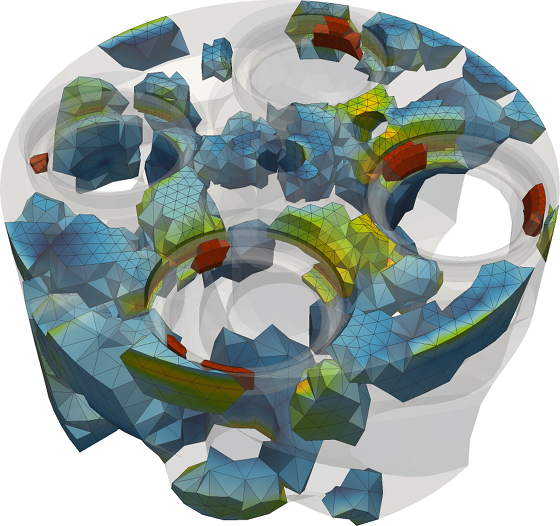Reduced order models & Accelerated methods
Z-rom module is an integral part of the Z-set suite, but can also be used in connection with major finite element solvers: Abaqus, Ansys, Samcef, etc.
Finite element (FE) elasto-plastic or elasto-viscoplastic simulations of complex components can still be prohibitive for lifetime predictions. There is a need for fast estimation methods of plasticity in a given region of interest, where a crack could be initiated. Z-rom uses machine learning trained with simulation results for hyper-reduced modeling of elasto-plastic structures.

Reduced approximation spaces are obtained either by the well known Singular Value Decomposition method or by more complex ROM-net classifiers. Amazing speedups, ranging from 10 to 1000, can be achieved via a reduced mesh (also termed reduced integration domain in the scientific literature). Various training data, from established FE software, can be used to create a hyper-reduced order model.
Z-rom makes simulation data valuable data in model-based engineering! The theoretical background and technology behind Z-rom module result from applied research at Mines ParisTech since 2008.
Z-rom opens a route to deep learning and transfer learning in computational mechanics
David Ryckelynck, 2020